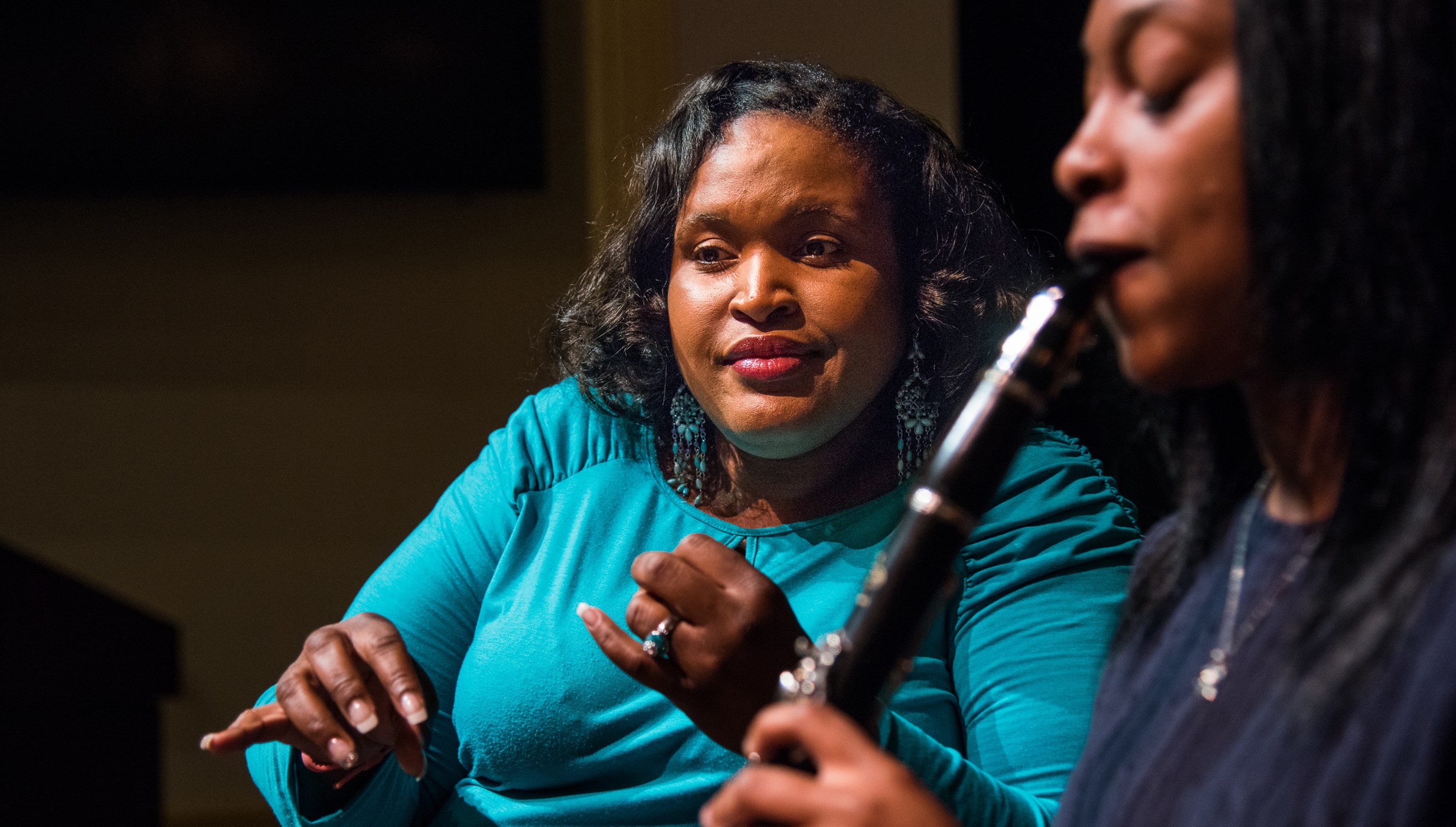We See Your Future in Music.
We see your greatest potential and your motivation to achieve. We see you at NSU.

Division of Music Programs
The Division of Music offers one undergraduate degree with two emphases and one graduate degree with three concentrations.
The Bachelor of Music in Music Education is designed to prepare teachers of music in elementary and secondary schools. The program includes theoretical and applied music studies, general studies, music history, literature, methodology, and practicum with concentration in Voice, Keyboard and Band/Orchestral instruments.
Auditions
UNDERGRADUATE PROGRAMS
All students who seek the Pre-Music Curriculum prior to entry into the Bachelor of Music program must audition. The student should prepare two works (or movements) in contrasting style on their requested major instrument. Students should choose literature that will showcase technical skills and musical artistry (tone, breath support, expression, interpretation, etc…).
Upon sufficient notice, an instrument and an accompanist can be provided for the audition. Recordings are accepted for students who live outside a 125 mile radius of the University. Percussion students should demonstrate technical proficiency and perform a solo selection in two of the following categories: snare drum (rudimental [marching] and concert), mallets, timpani, drum-set, and world percussion.
All students who seek the Pre-Music Curriculum prior to entry into the Bachelor of Music program must take the Diagnostic Examination in Music Theory and Sight-Singing. This thirty-minute examination will assess the student’s knowledge of beginning musical concepts. The student should be familiar with the following:
- Notation
- Key Signatures
- Scales
- Intervals
- Rhythm
- Time Signatures/Meter
- Triads
- Inversions
- Musical Terms
The student will be asked to sing a melody at sight, recognize the quality of triads, and identify intervals. In rare instances, the Division reserves the right to deny admission into the Pre-Music Curriculum, the Bachelor of Music, or Master of Music programs.
GRADUATE PROGRAMS
As a part of admission to degree status, full-time and part-time applicants will be required to take diagnostic examinations in music history and in theory. These examinations are given for placement purposes and normally do not constitute a basis for actual admission. If the student is deficient in certain areas, additional work will be required. The Admissions Committee reserves the right to require a student to take one or more undergraduate or review courses, if needed.
An audition of twenty minutes duration is required on the student’s principal instrument. Applicants should prepare their auditions according to the following guidelines:
Music Education/Performance Majors
- Piano: A work by J. S. Bach or Scarlatti, a classical sonata, and one or two compositions from the 19th and 20th centuries.
- Organ: Three or four works drawn from the Baroque period and the 19th and 20th centuries. A typical program might consist of a trio sonata movement or a prelude or fugue by Bach, a sonata by Mendelssohn or a comparable work by Franck, and a representative work by Hindemith, Dupre, or Messiaen.
- Voice: An Italian song, an aria from an opera or oratorio, French Art Song, and a German Lied should be performed. In addition, a work in English should be chosen. All works should be performed in the original language.
- Guitar: Works including a major Baroque or twentieth century piece, such as, but not limited to, any lute or cello suite by J. S. Bach, the flute suites of S. Weiss, the Partitia by Stephen Dogon, the Theme and Variations or Sonatina by Lennox Berkley, the Variations sur “Solia De Espana” et Fugue by Manuel M. Ponce, or the Nocturnal, by Benjamin Britten.
- Woodwind/Brasswind: Perform musically and fluently several compositions from the various style periods. A brief listing of representative works and technical requirements for each wind instrument may be obtained from the faculty teaching those instruments.
- Percussion: A high degree of snare techniques should be demonstrated through such works as Wilcoxon’s Swing Solo, Cirone’s Portraits in Rhythm, or any excerpt from the standard symphonic literature. Mallet percussion technique should be shown by the performance of all major and minor scales and such works as Creston’s Concerto for Marimba or Goldenberg Etude. The tympani part of a Beethoven symphony should also be played.
Theory/Composition Majors
- Submission of a minimum of three compositions from various media with at least one of the works for an ensemble of four or more instruments and/or voices. Tape recordings of the compositions may be included.